Agra is dirty, full of litter and shambolic, yet it’s home to the world’s most beautiful building – the Taj Mahal – and a spectacular Mughal-era fort.
We couldn’t go all the way to India and not visit Shah Jahan’s monument to love but we almost didn’t make it because our Graham woke on the day of our travels with the lurgy, and the last thing I wanted him to endure was three hours or so on a train with notoriously foul toilets. Thanks to a poor night’s sleep and my own lav-related concerns about the journey, part of me wouldn’t have minded staying on in Delhi for an extra day of rest and relaxation.
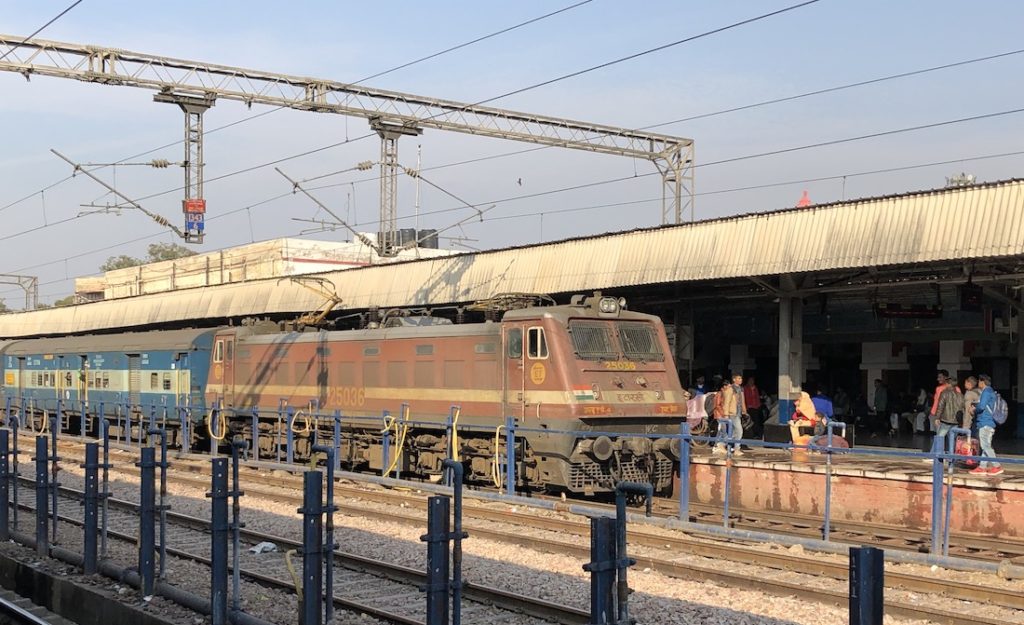
But we girded our loins and a few hours later found ourselves at New Delhi station, one of the busiest and most chaotic places I’ve had the good fortune of visiting. Traffic blocked the streets outside, filling the air with fumes and horns, while street vendors scurried about amid the muck setting up food stalls for commuters and other travellers. We dragged our cases to the platform and waited for the Kerala Express to begin its long journey from the capital to the southern tip of the country. We’d booked ourselves into Second AC class, a sleeping compartment that handily converted into seating for daytime travel. To my surprise, catching the train proved to be a lot less painful than I’d expected, despite the throng of passengers and traders on the platform, the stray dogs and beggars. We had to dodge a man sleeping on the platform, wrapped in aged, dirty blankets, and men dragging heavy boxes of goods up and down on old wooden carts, but otherwise we survived unscathed.
The express left on time, chugging into the suburbs at a speed that made me question its appellation, through stations in varying states of disrepair or construction. The ever-present mountains of litter lined the tracks, while shacks made of discarded bits of plastic, metal and wood formed impromptu shelters for the desperately poor. The homeless crowded together for shelter under bridges, seeking warmth around burning piles of rubbish. The poverty was horrifying and depressing, a sign that the new wealth-generating, BRIC-era India has a long way to go in sorting its biggest social problems. I watched small gangs of workers plugging away at back-breaking track maintenance tasks with tools that went out of fashion in Britain a century ago. Cattle wandered just inches from the tracks – the same tracks that locals used as footpaths, risking life and limb in the process. Suburbs gave way to polluting industrial plants and attractive agricultural landscapes. Poor villages lay marooned in lakes of rubbish while others were being ruthlessly cleaved by new road and rail lines. I watched fascinated as the world trundled by, while men wandered up and down the train selling food and drink.
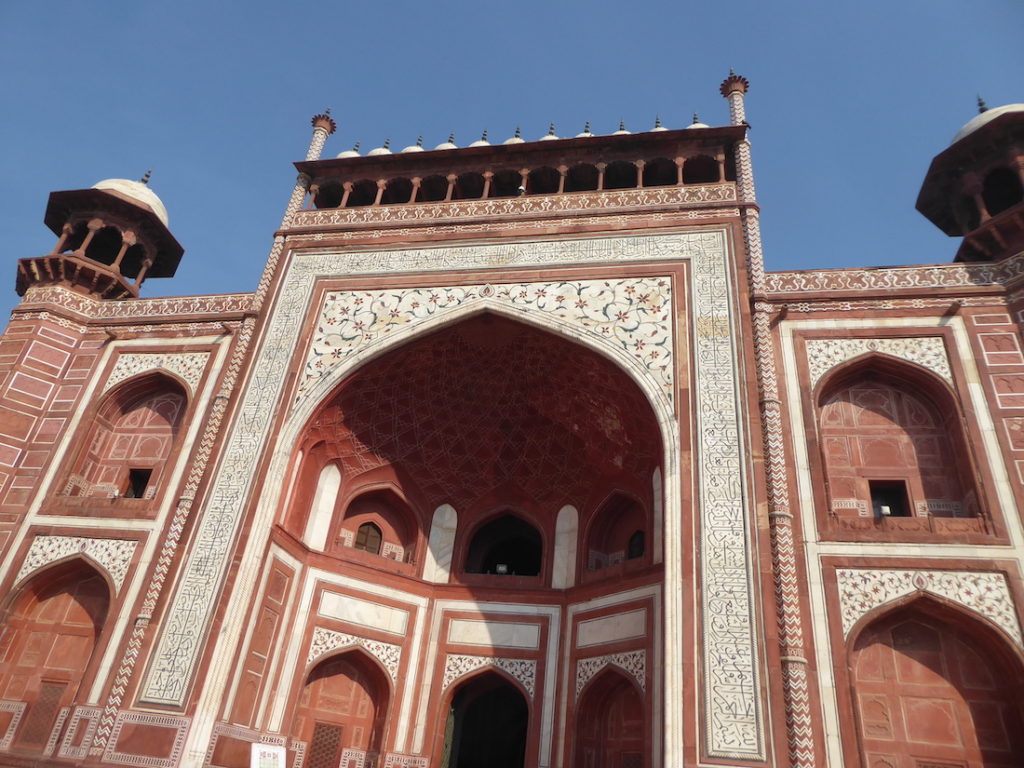
Frustrating delays and engineering works meant we were late arriving at Agra station, which had attracted the expected armies of chancers and touts. But we grabbed ourselves a voucher from the pre-paid taxi booth and went off in search of the Courtyard by Marriott, a modern and comfortable hotel on the edge of town. Agra itself proved colourful if depressing, a jumble of litter, overcrowding, crumbling roads and clapped-out vehicles. As ever, the cab journey involved at least half a dozen risks to life and limb and the driver jabbed repeatedly at the horn. Arriving too late in the day to do any sightseeing, we ate a meal in the hotel and I propped up the bar for a few hours while Graham recovered from his lurgy in bed.
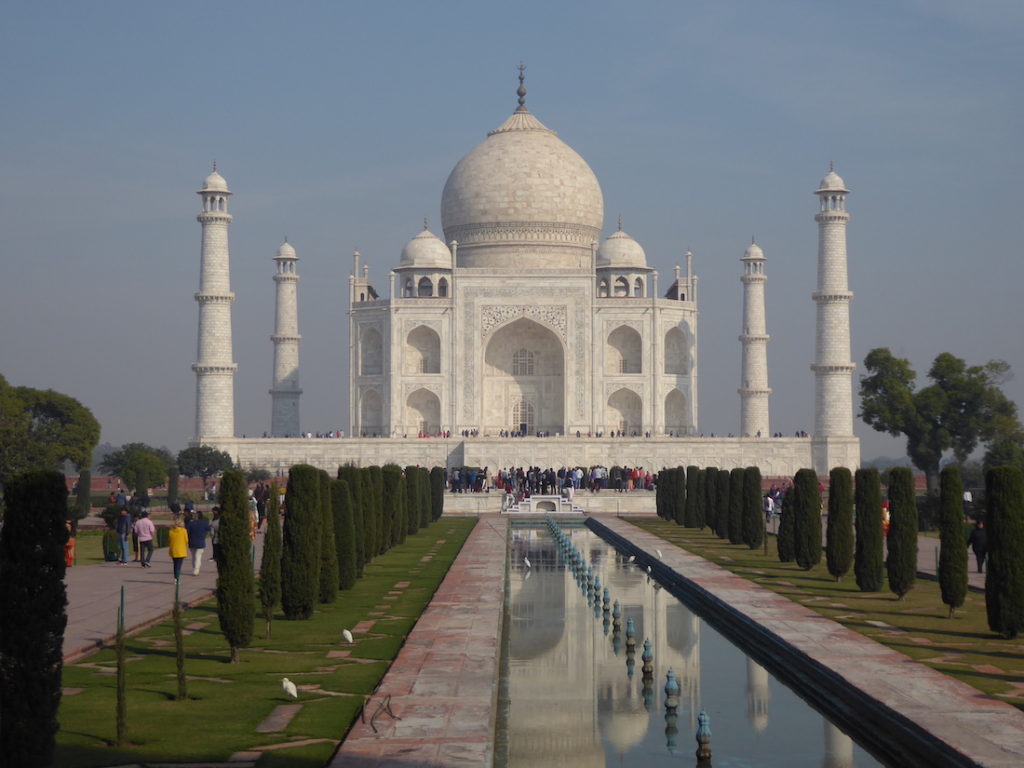
The Taj Mahal proved to be every bit as extraordinary and as dazzling as I’d expected it to be – and so much more. Thanks to TV, films and magazines, it must be one of the most familiar buildings in the world but its gleaming ivory white marble and utterly sublime architecture still managed to bring a lump to my throat, and there aren’t many buildings in the world that can do that. Framed by perfect blue skies, it revealed itself gradually as we walked through the extensive grounds, past manicured lawns that are kept free of weeds by committed bands of female workers. The main gate alone is a fantastic structure in marble and sandstone, gloriously decorated and worth pausing for, but it’s easily overlooked in the rush to get to the Taj Mahal itself. Walking through the gate, it comes into view beyond the perfectly proportioned paradise gardens, gentle water features and footpaths. The effect is spellbinding. I stopped, stared and tried not to cry in front of all the strangers around me but I imagine I wasn’t alone in being overcome. To describe it as beautiful is a massive understatement.
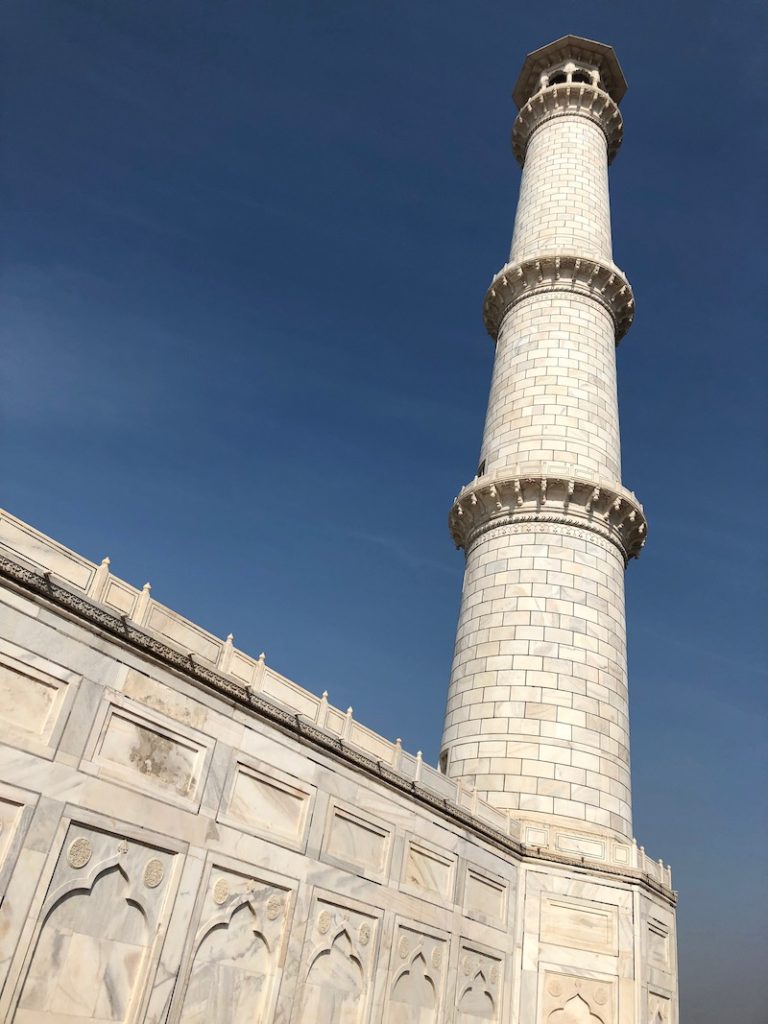
The Taj Mahal was built by the 17th century Mughal emperor Shah Jahan as the tomb of his favourite wife, Mumtaz Mahal, who died during childbirth. It was completed in 1653 and stands today as a UNESCO World Heritage Site, the most extraordinary monument to both love and grief. The emperor was a great builder in Agra, then the capital of his empire, and later in his new capital of Delhi, but the Taj Mahal is his greatest legacy. Fortunately, it was quieter than I’d expected it to be during our visit so exploring the grounds was relatively painless. The building itself is framed on either side by two identical red sandstone and white marble buildings, one a mosque, the other what may have been a guesthouse. The craftsmanship, carving and other adornments on these structures are impressive indeed but not a patch of those on the Taj Mahal itself. For not only is the building sublime, the decoration inside and out is astounding. There’s stunning caligraphy, exquisitely carved marble screens and inlay work. It may look totally white from a distance, but there are dashes of colour too. We were ushered inside to view the tombs of Shah Jahan and his wife but staff were on hand to ensure we didn’t dawdle. We circled the building and its towering minarets. Behind us lay the feeble Yamuna River and several miles beyond, through the haze, noble Agra Fort.
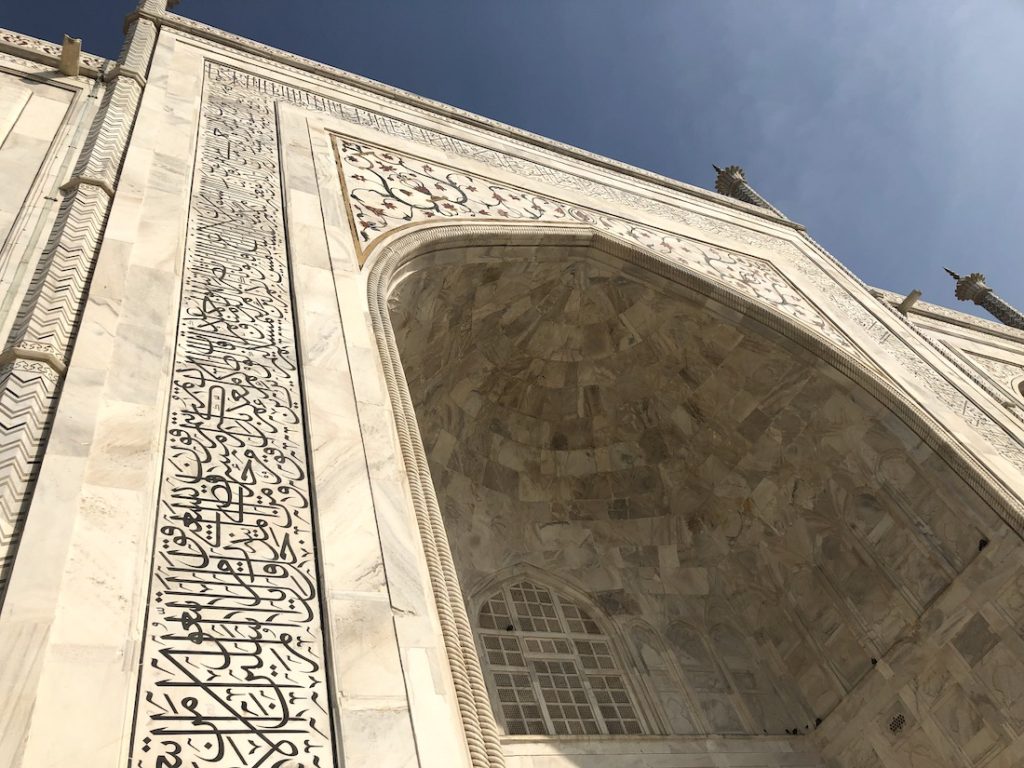
The Taj Mahal had been a lot less hassle to visit than promised by the guide book, with its stories of long queues, touts and bureaucracy. In fact, arriving at the East Gate we found no queues at all and waltzed straight in through the red sandstone walls that surround the site. OK, there were plenty of people wanting to be our guide or photographer but they were easy to shake off.
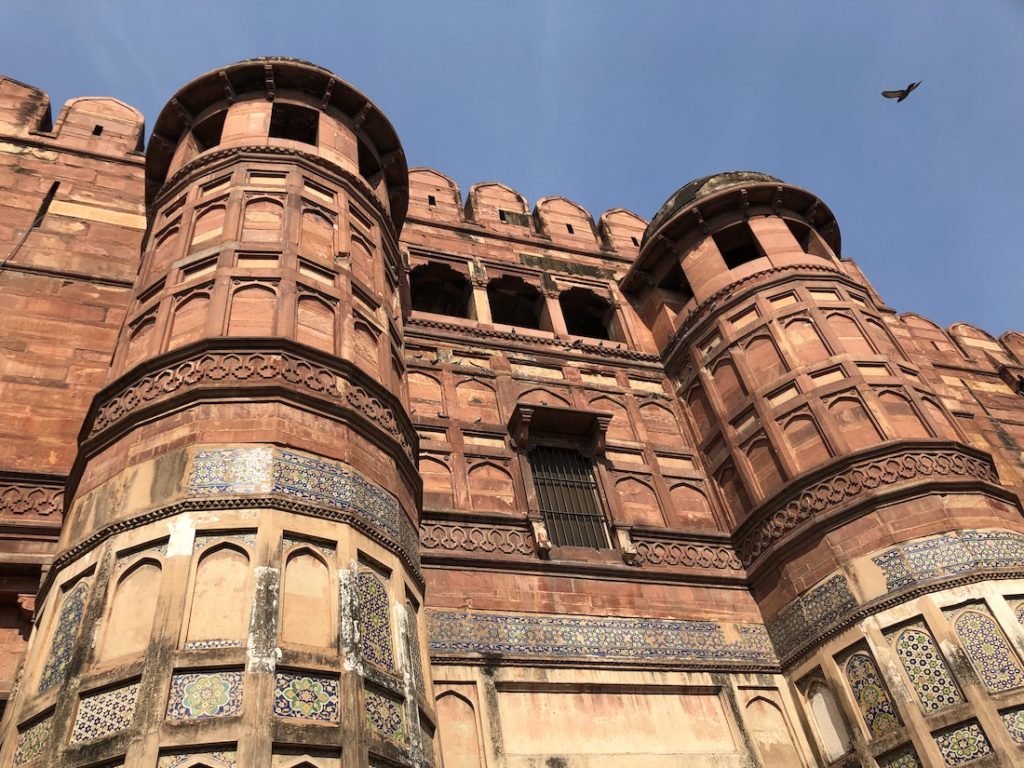
We caught one of the electric buggies that ferry visitors back and forth from the east gate to the main parking area, dodged the many souvenir sellers and booked ourselves an Uber to the fort, where the gatehouse was a maelstrom of far more insistent chancers. Work on the fort began in the 1560s during the reign of Mughal Emperor Akbar but his grandson, Shah Jahan, ordered numerous structural alterations to its fortifications and palaces during his time on the throne, many of them in his favoured white marble. He was later imprisoned within its walls by his rebellious son Aurangzeb, although as far as prisons go it must’ve been a cut above your average dungeon. During the Raj, the Brits used the site as a military base and some damage was caused during the 1857 Indian Rebellion. Despite all that, the fort is a revelation. The architects and craftsmen who designed the buildings, carved the stone, hammered, chiselled and painted were an exceptionally talented bunch and their handiwork is evident in the many public audience halls, throne rooms, mosques and private chambers that make up the tour. We walked in awe among the treasures, dodging the selfie-fixated multitudes, relishing the peace of the gardens that dotted the site. Sometimes, in the distance and through the haze, we could see the statuesque Taj Mahal perched on the banks of the river.
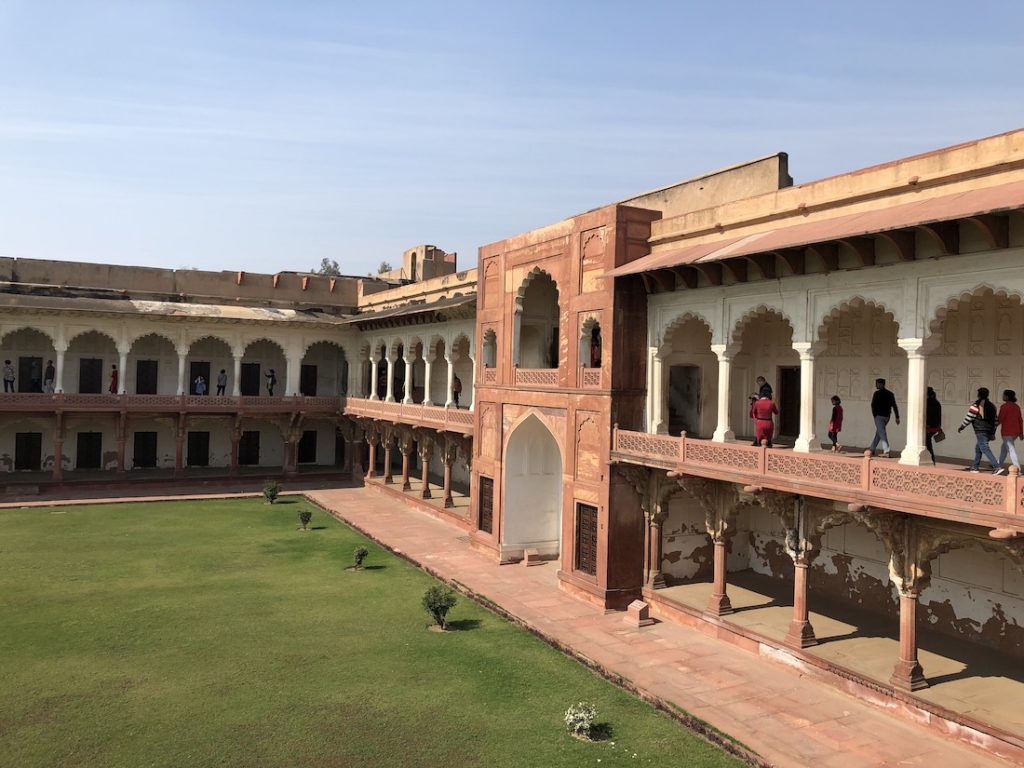
Thank goodness we’d had the time to visit both the Taj Mahal and Agra Fort because both had proved to be worth the price of admission many times over…
We returned to our hotel for lunch and to collect our bags, before getting the taxi to the station for the journey back to Delhi and the next leg of our holiday. The train was delayed by more than an hour so we sat on the platform and watched the world go by. Trains came and went, monkeys and their nippers played on the tracks and platforms, tucking into bits of food that had been thrown away by passengers. At least our train hurtled at proper express speed back to the capital, making up time en route. And so, after dragging our bags through the hellish turmoil of New Delhi Station to the Metro, we had time to chill out at the Andaz Delhi Aerocity and recharge ahead of our morning flight to Jodhpur.

